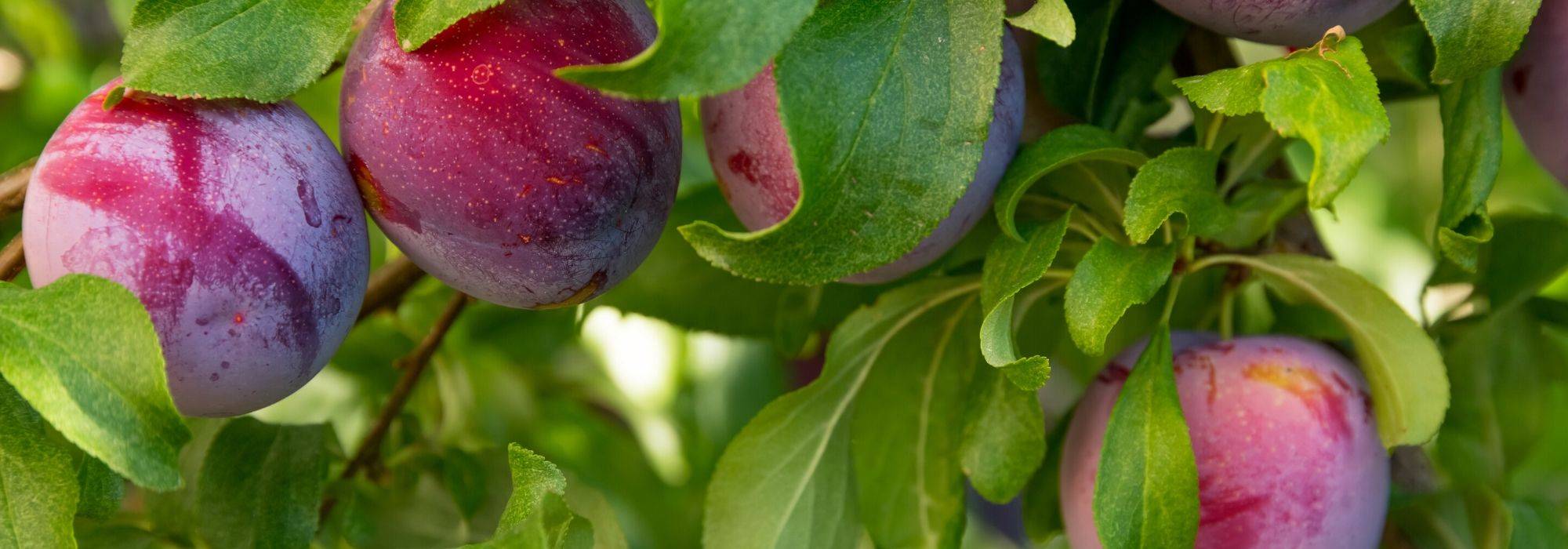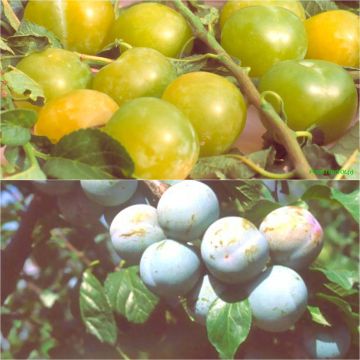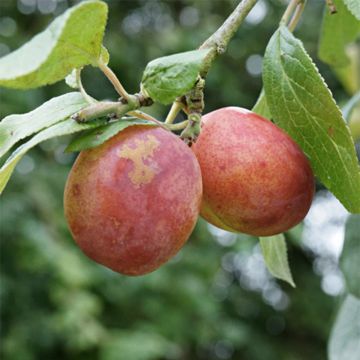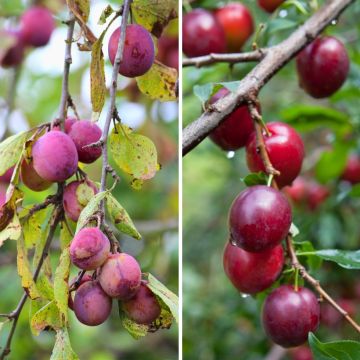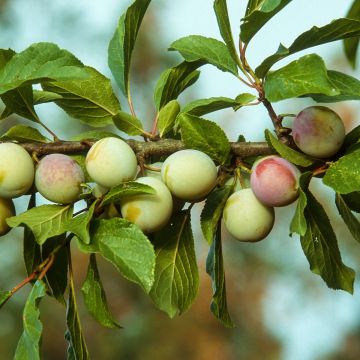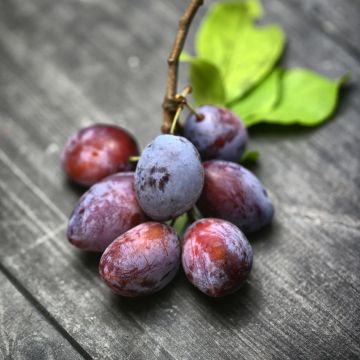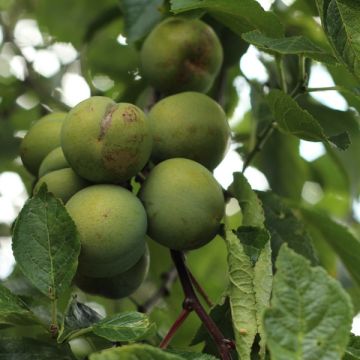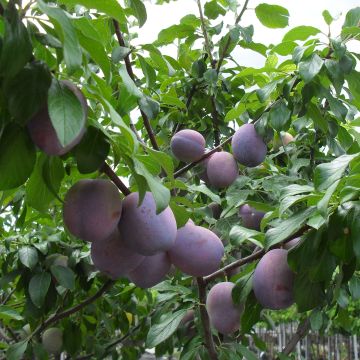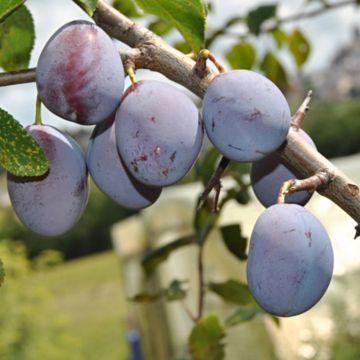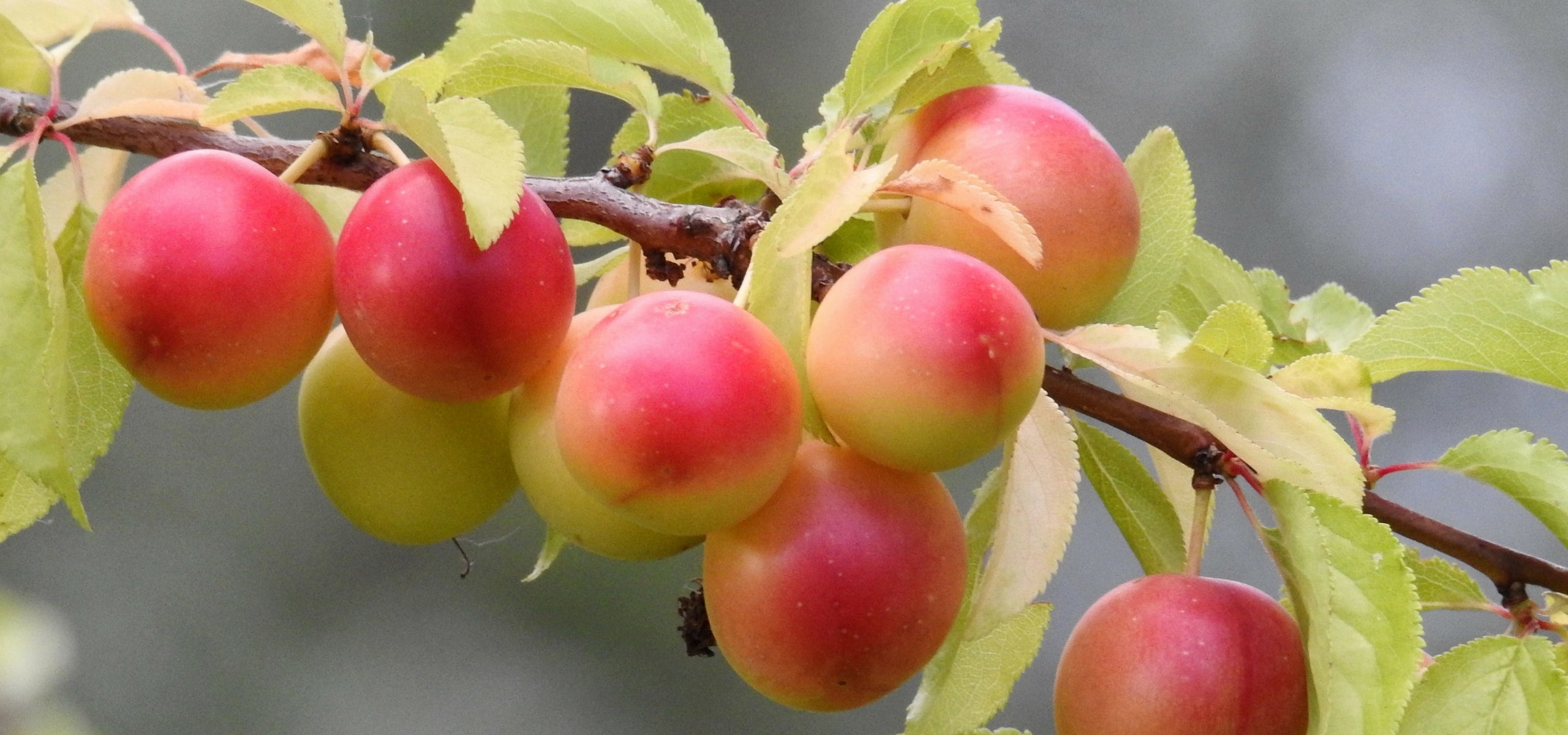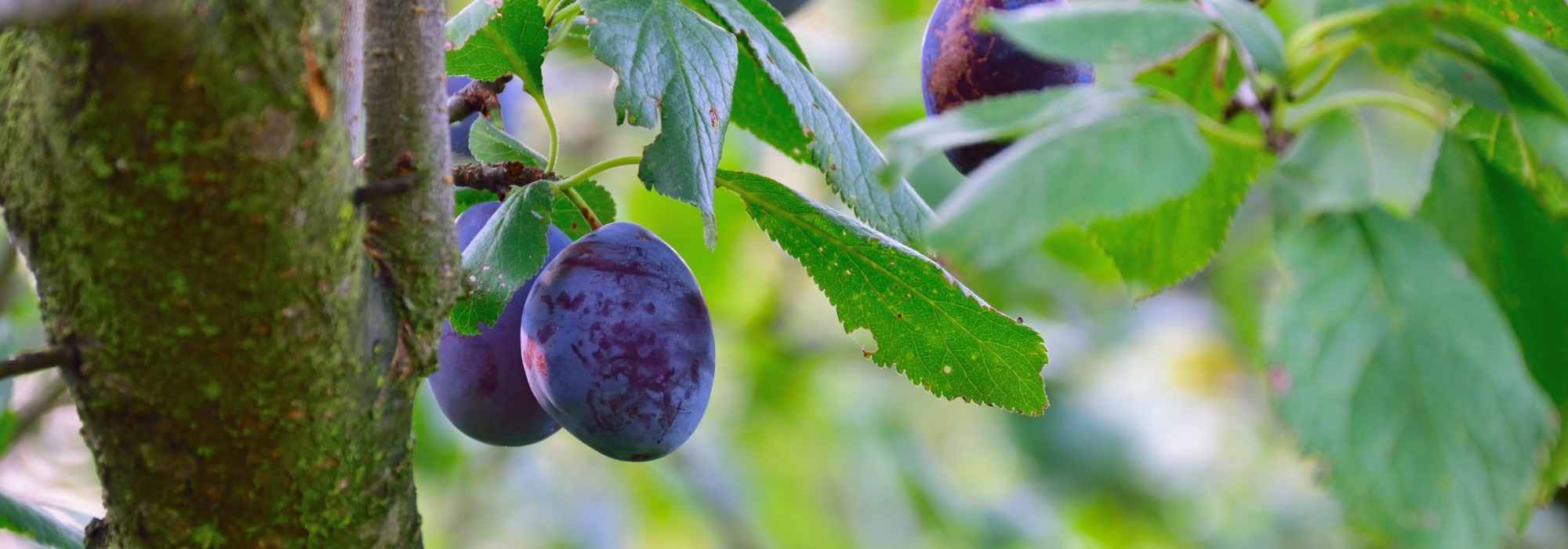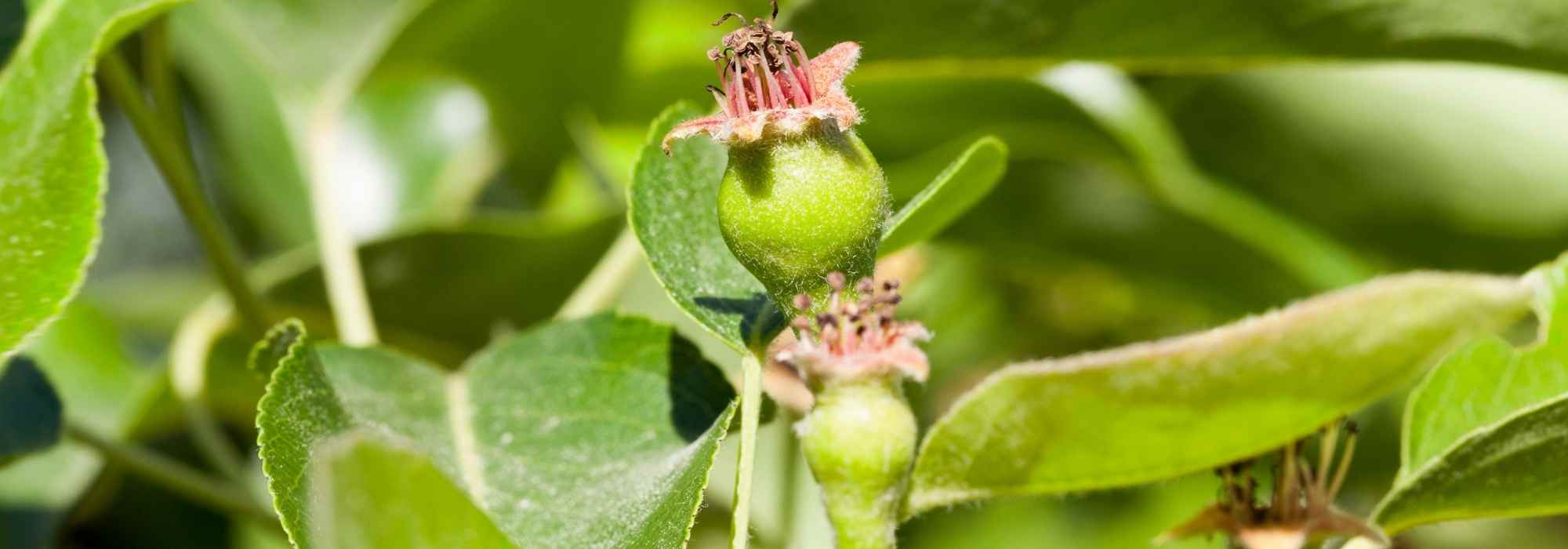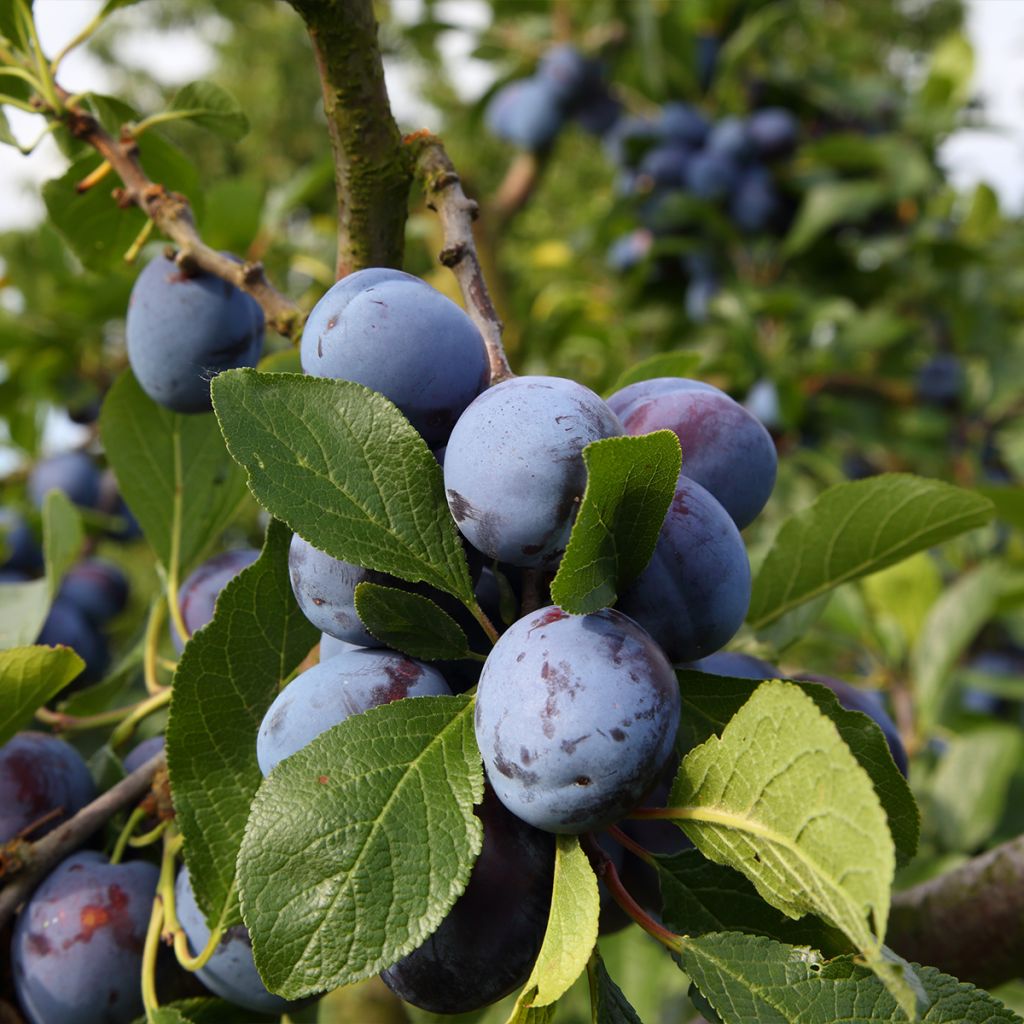

Prunus domestica Bleue de Belgique - Common plum
Prunus domestica Bleue de Belgique - Common plum
Prunus domestica Bleue de Belgique
European plum, Common plum, Garden plum
Special offer!
Receive a €20 voucher for any order over €90 (excluding delivery costs, credit notes, and plastic-free options)!
1- Add your favorite plants to your cart.
2- Once you have reached €90, confirm your order (you can even choose the delivery date!).
3- As soon as your order is shipped, you will receive an email containing your voucher code, valid for 3 months (90 days).
Your voucher is unique and can only be used once, for any order with a minimum value of €20, excluding delivery costs.
Can be combined with other current offers, non-divisible and non-refundable.
Home or relay delivery (depending on size and destination)
Schedule delivery date,
and select date in basket
This plant carries a 6 months recovery warranty
More information
We guarantee the quality of our plants for a full growing cycle, and will replace at our expense any plant that fails to recover under normal climatic and planting conditions.
Description
Prunus domestica Bleue de Belgique is a vigorous, hardy, and highly productive variety. It produces a medium to large-sized fruit with an irregular, oval, almost round shape, a thin and pruinose skin, and a purple-blue colour. Its yellow-green flesh is firm, melting, juicy, sweet, and of excellent taste. The harvest takes place from mid-July to mid-August, and the fruits are consumed as they ripen. The plum is succulent and delicious to enjoy as is. When cooked, it is a variety that lends itself well to many sweet or savoury recipes. It is a partially self-fertile variety that requires the presence of other plum varieties nearby to improve pollination and increase the number of fruits.
The Prunus domestica (Common Plum) is a fruit tree belonging to the Rosaceae family, like the apricot, almond, and peach tree. It is native to Syria, where it sometimes grows up to 1000 metres (3281 feet) in altitude. The Bleue de Belgique variety is presumed to originate from Belgium around 1850, where it is traditionally cultivated.
The Bleue de Belgique Plum tree forms a fruit tree with a fairly upright frame that can reach 6 to 8 metres (20 to 26 feet) in height, producing numerous branches grouped in a spreading canopy. Its habit is well suited to free forms on high, half, or low stems. Its deciduous foliage is composed of obovate leaves, 5 to 7cm (2 to 3in) long, with serrated edges, slightly pubescent on the underside, and dark green. Towards the end of March or beginning of April the white flowers, 1.5 to 2.5 cm (1in) in diameter, appear before the leaves on the previous year's branches. The flowering is sensitive to spring frosts, but it is so abundant that frost rarely compromises the harvest. It has remarkably decorative spring flowering, particularly attractive to bees and nectar-feeding insects. This plum tree is said to be partially self-fertile, meaning the flowers cannot fertilise themselves. That is why the presence of other plum varieties nearby, with flowering occurring at the same time, is necessary. For example, the varieties Reine-claude dorée, Reine-claude d'Oullins, Quetsche d'Alsace, Quetsche d'Italie, Mirabelle de Metz, Mirabelle de Nancy, and Victoria are suitable for cross-pollination, thereby increasing the number of fruits.
Since plums are fragile, they are harvested with a picking pole or manually using a ladder, but always delicately. Delicious and delightful, plums can be consumed fresh from the harvest, eaten raw or mixed in a fruit salad or dessert. They are also exquisite in the making of clafoutis, cakes, crumbles, or pies, and as an accompaniment to savoury dishes based on white meats (turkey, chicken, veal, etc.) or tagines. They are also perfect for making jams, compotes, juices, or preserved in syrup. The plum is a light and balancing fruit. Low in calories, it is rich in potassium, calcium, and magnesium, with a significant supply of iron. Its content of vitamins C, B, E, and K, phenolic antioxidants, and fibres make the plum a health asset. The fruits can only be stored for a few days at room temperature. However, they can be frozen once washed, dried, and pitted, or preserved in jams or syrup.
In the Plum tree - Mirabelles category, Prunus domestica Bleue de Belgique is a vigorous, hardy, and highly productive variety, recognised for the excellent taste of its fruits. Under good conditions, it is easy to grow, generous in fruit, and resistant to diseases. Like many fruit trees, it prefers rich, deep, and well-drained soils. It does not tolerate excess moisture, heavy and compact soils, or excessively alkaline soils. It prefers a sheltered exposure in full sun to protect it from frost and strong or cold winds, as the branches are very brittle.
Very popular thanks to its fruit, the plum tree finds its place in the garden for the pleasure of young and old alike. With a wide range of varieties, it is easy to find the one that best suits yours tastes.
Prunus domestica Bleue de Belgique - Common plum in pictures
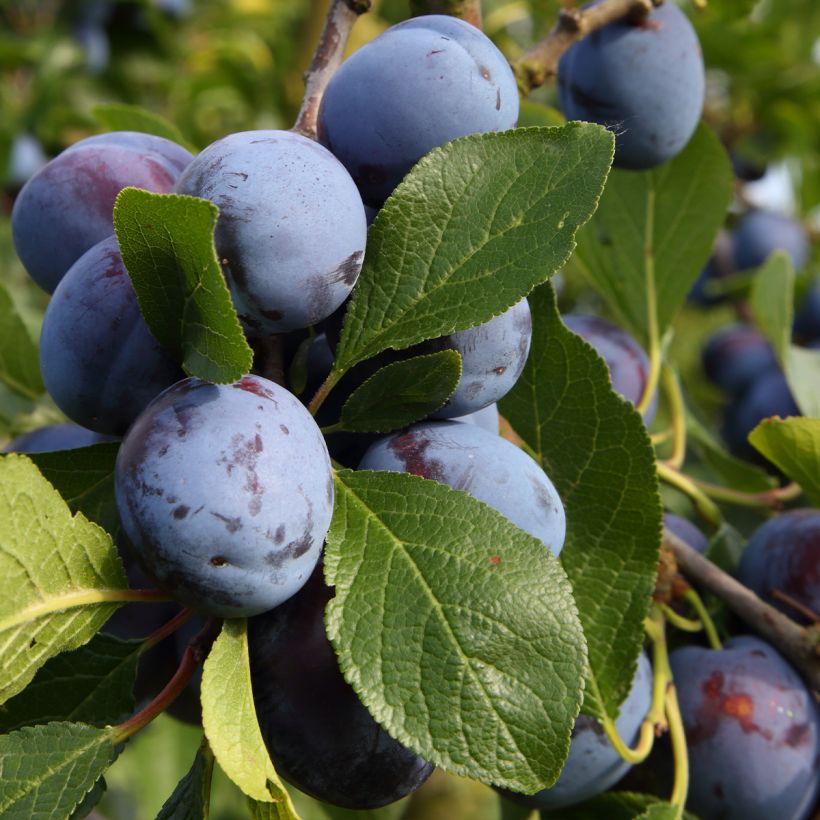

Plant habit
Fruit
Flowering
Foliage
Botanical data
Prunus
domestica
Bleue de Belgique
Rosaceae
European plum, Common plum, Garden plum
Cultivar or hybrid
Other Plum Trees
View all →Planting and care
Perfectly hardy, the Bleue de Belgique Plum is perfectly hardy and can withstand temperatures below -15°C (5°F) and can be cultivated up to 1,000 metres (3 feet) in altitude. When grown under good conditions, it is one of the easiest fruit trees to grow, as it is both generous and robust. Plum trees bloom early in spring and are therefore exposed to frost, although frost rarely affects plum harvests. Avoid areas that are too exposed to north and east winds in the coldest regions. To produce beautiful fruits, the plum tree appreciates warmth and well-sunlit locations sheltered from strong winds (the branches are very brittle). It is a vigorous tree that is suitable for all soils, although it prefers rich, moist, deep, and well-drained soils, slightly acidic, without stagnant moisture or too much limestone. It only really dislikes waterlogged soils. The plum tree is cultivated only in free forms, known as open-centred. With its white flowering, it brings a touch of freshness to a natural garden as well as an orchard.
Planting the plum tree is done from November to March during the dormancy period, and outside of frost periods. Container-grown trees can be planted all year round provided that the soil is neither frozen nor waterlogged. Don't forget to dress and prune the bare roots before planting. In open ground you can plant the plum tree in groups of 3 or 5, spacing the trees 6 to 7 metres (20 to 23 feet) apart.
Prepare the soil well. Dig a wide planting hole at least 3 times the volume of the root ball (80x80 cm (32in)). Ensure good drainage with a little gravel. Install the tree in the hole and plant a stake without tightening the ties too much. Fill in and compact the soil as you go with garden soil enriched with potting soil, mature compost, and 2 or 3 handfuls of crushed horn, without burying the graft collar (leave the graft point 10 cm (4in) above the ground). Create a depression in the soil around the base and water abundantly and regularly to help your plum tree establish itself.
After planting, for the first three years water regularly as the soil needs to remain moist throughout the summer. It does not like overly dry soils. In case of water shortage, its fruits may fall prematurely. After 2 or 3 years, it will better withstand a short period of drought. Mulch the base of your plum tree during the first years with dry vegetation (bark, dead leaves, straw, etc.) to retain moisture in the summer.
If necessary, thin out the fruits. Ripe plums attract wasps: collect fallen fruits from the ground. If necessary, remove suckers that have grown over time at the base of the tree, but be careful when hoeing, as its roots are shallow. In autumn or spring, apply manure or fertiliser for fruit trees.
Planting period
Intended location
Care
Planting & care advice
This item has not been reviewed yet - be the first to leave a review about it.
Haven't found what you were looking for?
Hardiness is the lowest winter temperature a plant can endure without suffering serious damage or even dying. However, hardiness is affected by location (a sheltered area, such as a patio), protection (winter cover) and soil type (hardiness is improved by well-drained soil).

Photo Sharing Terms & Conditions
In order to encourage gardeners to interact and share their experiences, Promesse de fleurs offers various media enabling content to be uploaded onto its Site - in particular via the ‘Photo sharing’ module.
The User agrees to refrain from:
- Posting any content that is illegal, prejudicial, insulting, racist, inciteful to hatred, revisionist, contrary to public decency, that infringes on privacy or on the privacy rights of third parties, in particular the publicity rights of persons and goods, intellectual property rights, or the right to privacy.
- Submitting content on behalf of a third party;
- Impersonate the identity of a third party and/or publish any personal information about a third party;
In general, the User undertakes to refrain from any unethical behaviour.
All Content (in particular text, comments, files, images, photos, videos, creative works, etc.), which may be subject to property or intellectual property rights, image or other private rights, shall remain the property of the User, subject to the limited rights granted by the terms of the licence granted by Promesse de fleurs as stated below. Users are at liberty to publish or not to publish such Content on the Site, notably via the ‘Photo Sharing’ facility, and accept that this Content shall be made public and freely accessible, notably on the Internet.
Users further acknowledge, undertake to have ,and guarantee that they hold all necessary rights and permissions to publish such material on the Site, in particular with regard to the legislation in force pertaining to any privacy, property, intellectual property, image, or contractual rights, or rights of any other nature. By publishing such Content on the Site, Users acknowledge accepting full liability as publishers of the Content within the meaning of the law, and grant Promesse de fleurs, free of charge, an inclusive, worldwide licence for the said Content for the entire duration of its publication, including all reproduction, representation, up/downloading, displaying, performing, transmission, and storage rights.
Users also grant permission for their name to be linked to the Content and accept that this link may not always be made available.
By engaging in posting material, Users consent to their Content becoming automatically accessible on the Internet, in particular on other sites and/or blogs and/or web pages of the Promesse de fleurs site, including in particular social pages and the Promesse de fleurs catalogue.
Users may secure the removal of entrusted content free of charge by issuing a simple request via our contact form.
The flowering period indicated on our website applies to countries and regions located in USDA zone 8 (France, the United Kingdom, Ireland, the Netherlands, etc.)
It will vary according to where you live:
- In zones 9 to 10 (Italy, Spain, Greece, etc.), flowering will occur about 2 to 4 weeks earlier.
- In zones 6 to 7 (Germany, Poland, Slovenia, and lower mountainous regions), flowering will be delayed by 2 to 3 weeks.
- In zone 5 (Central Europe, Scandinavia), blooming will be delayed by 3 to 5 weeks.
In temperate climates, pruning of spring-flowering shrubs (forsythia, spireas, etc.) should be done just after flowering.
Pruning of summer-flowering shrubs (Indian Lilac, Perovskia, etc.) can be done in winter or spring.
In cold regions as well as with frost-sensitive plants, avoid pruning too early when severe frosts may still occur.
The planting period indicated on our website applies to countries and regions located in USDA zone 8 (France, United Kingdom, Ireland, Netherlands).
It will vary according to where you live:
- In Mediterranean zones (Marseille, Madrid, Milan, etc.), autumn and winter are the best planting periods.
- In continental zones (Strasbourg, Munich, Vienna, etc.), delay planting by 2 to 3 weeks in spring and bring it forward by 2 to 4 weeks in autumn.
- In mountainous regions (the Alps, Pyrenees, Carpathians, etc.), it is best to plant in late spring (May-June) or late summer (August-September).
The harvesting period indicated on our website applies to countries and regions in USDA zone 8 (France, England, Ireland, the Netherlands).
In colder areas (Scandinavia, Poland, Austria...) fruit and vegetable harvests are likely to be delayed by 3-4 weeks.
In warmer areas (Italy, Spain, Greece, etc.), harvesting will probably take place earlier, depending on weather conditions.
The sowing periods indicated on our website apply to countries and regions within USDA Zone 8 (France, UK, Ireland, Netherlands).
In colder areas (Scandinavia, Poland, Austria...), delay any outdoor sowing by 3-4 weeks, or sow under glass.
In warmer climes (Italy, Spain, Greece, etc.), bring outdoor sowing forward by a few weeks.






























